
Congregation Emanu-El of New York is the first Reform Jewish congregation in New York City. It has served as a flagship congregation in the Reform branch of Judaism since its founding in 1845. The congregation uses Temple Emanu-El of New York, one of the largest synagogues in the world.

Yiddish theatre consists of plays written and performed primarily by Jews in Yiddish, the language of the Central European Ashkenazi Jewish community. The range of Yiddish theatre is broad: operetta, musical comedy, and satiric or nostalgic revues; melodrama; naturalist drama; expressionist and modernist plays. At its height, its geographical scope was comparably broad: from the late 19th century until just before World War II, professional Yiddish theatre could be found throughout the heavily Jewish areas of Eastern and East Central Europe, but also in Berlin, London, Paris, Buenos Aires and New York City.
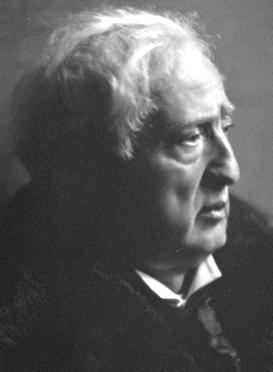
Jacob Pavlovich Adler was a Jewish actor and star of Yiddish theater, first in Odessa, and later in London and in New York City's Yiddish Theater District.
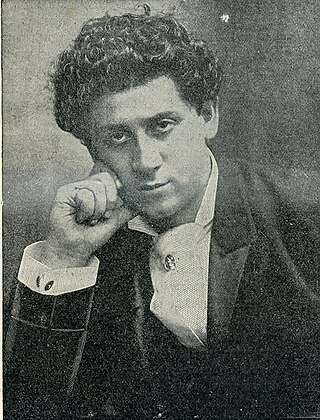
Boris Thomashefsky, born Boruch-Aharon Thomashefsky, was a Ukrainian-born Jewish singer and actor who became one of the biggest stars in Yiddish theater.

Sophia Karp, born Sara Segal, and also known as Sophie Goldstein, Sofia Carp, and Sophie Karp, was a Romanian-born Jewish actress and soprano, the first professional Yiddish theater actress.
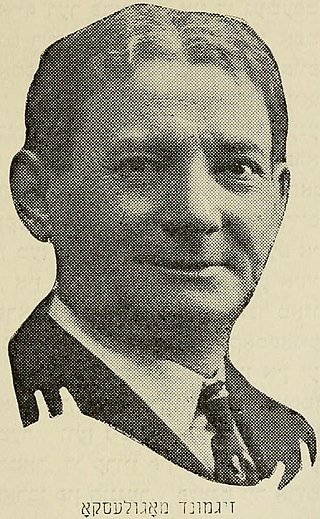
Sigmund Mogulesko — Yiddish: זעליק מאָגולעסקאָZelik Mogulesko, first name also sometimes spelled as Zigmund, Siegmund, Zelig, or Selig, last name sometimes spelled Mogulescu — was a singer, actor, and composer in the Yiddish theater in New York City. He was born in Kalarash, Bessarabia and began singing in the local synagogue choir. Before reaching adolescence, he was paid nearly three times what teachers made, to sing in the synagogue of Chişinău. Soon after moving to Bucharest, Romania, he was paid to sing in churches as well as synagogues, and started acting.

Moses Ha-Levi Horowitz, also known as Moishe Hurvitz, Moishe Isaac Halevy-Hurvitz, etc., was a playwright and actor in the early years of Yiddish theater. Jacob Adler describes him as an "authorit[y] on dramaturgy", but also remarks that before being part of the Yiddish theater in London in the mid-1880s he had "wandered in different lands, involved himself in various undertakings, and then moved on often leaving, it is said not altogether pleasant memories behind him." He was one of the few figures in the early years of Yiddish theater who did not participate in the boom years in Imperial Russia (1879–1883).
Joseph Lateiner was a playwright in the early years of Yiddish theater, first in Bucharest, Romania and later in New York City, where he was a co-founder in 1903 with Sophia Karp of the Grand Theater, New York's first purpose-built Yiddish language theater building.

Jacob Michailovitch Gordin was a Russian-born American playwright active in the early years of Yiddish theater. He is known for introducing realism and naturalism into Yiddish theater.
Moishe Finkel was a prominent figure in the early years of Yiddish theater. He was business partner first of Abraham Goldfaden and later of Sigmund Mogulesko and, for a time, was married to prima donna Annetta Schwartz. Together, they dominated Yiddish theatre in Bucharest in the early 1880s and in New York City in the late 1880s and into the 1890s, with a repertoire based mainly in the works of Joseph Lateiner and Moses Horowitz.
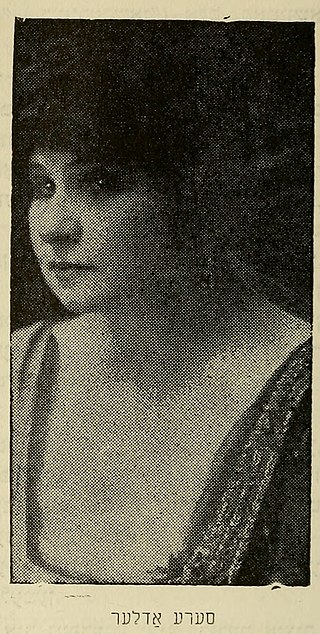
Sara Adler was a Russian-born Jewish actress in Yiddish theater who made her career mainly in the United States.

David Kessler was a prominent actor in the first great era of Yiddish theater. As a star Yiddish dramatic performer in New York City, he was the first leading man in Yiddish theater to dispense with incidental music.

The Yiddish King Lear was an 1892 play by Jacob Gordin, and is generally seen as ushering in the first great era of Yiddish theater in New York City’s Yiddish Theater District, in which serious drama gained prominence over operetta.
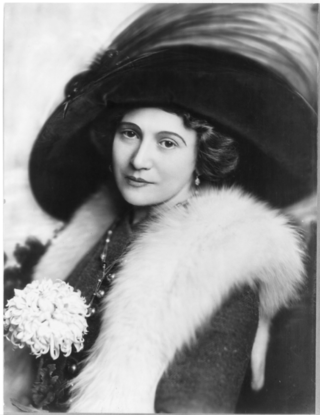
Bertha Kalich was a Ukrainian-Jewish-American actress. Though she was well-established as an entertainer in Eastern Europe, she is best remembered as one of the several "larger-than-life" figures that dominated New York stages during the "Golden Age" of American Yiddish Theatre during the late nineteenth and early twentieth century. Historians estimate that, during her career, Kalich performed more than 125 different roles in seven different languages.

Chrystie Street is a street on Manhattan's Lower East Side and Chinatown, running as a continuation of Second Avenue from Houston Street, for seven blocks south to Canal Street. It is bounded on the east for its entirety by Sara Delano Roosevelt Park, for the creation of which the formerly built-up east side of Chrystie Street was razed, eliminating among other structures three small synagogues. Originally called First Street, it was renamed for Col. John Chrystie, a veteran of the War of 1812 and a member of the Philolexian Society of Columbia University, and a new First Street was laid out above Houston Street.
The National Theater was a Yiddish theatre at the southwest corner of Second Avenue (Chrystie) and Houston Street in the Yiddish Theater District in Manhattan, New York City, United States. When first built it was leased to Boris Thomashefsky and Julius Adler. Its grand opening as the Adler-Thomashefsky National Theatre was on September 24, 1912.

The Yiddish Art Theatre was a New York Yiddish theatre company of the 20th century.
Pauline Edelstein was a Yiddish theatre actress.

The Yiddish Theatre District, also called the Jewish Rialto and the Yiddish Realto, was the center of New York City's Yiddish theatre scene in the early 20th century. It was located primarily on Second Avenue, though it extended to Avenue B, between Houston Street and East 14th Street in the East Village in Manhattan. The District hosted performances in Yiddish of Jewish, Shakespearean, classic, and original plays, comedies, operettas, and dramas, as well as vaudeville, burlesque, and musical shows.

Joseph Brody was an American Jewish composer who wrote prolifically for the Yiddish theatre as well as liturgical Jewish works. He taught George Gershwin and was a friend of Yossele Rosenblatt. His daughter, Estelle Brody, was an actress.
















